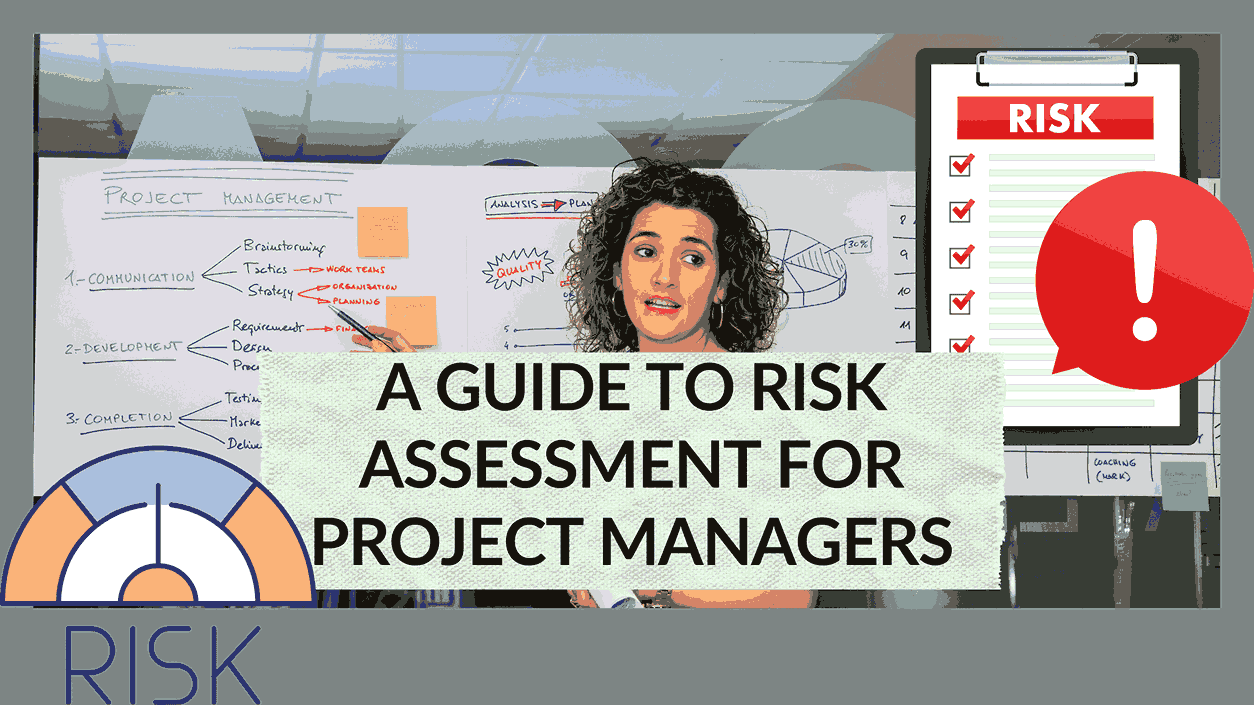A guide to risk assessment for project managers


A Guide to Risk Assessment for Project Managers
In the world of project management, where each endeavor is a carefully orchestrated dance of tasks, timelines, and resources, risk is the uninvited guest who can quickly turn your best-laid plans into chaos. That’s why performing effective risk assessments is a vital component of ensuring your project’s success. In this comprehensive guide, we will delve into the essentials of effective project risk assessments, providing you with insights and tools to navigate the complex terrain of project risks.
Understanding Project Risk Assessment
A project risk assessment is a formal process that project teams undertake to identify and analyze potential risks that a project might encounter. These risks can be both positive and negative in nature. Negative risks, often referred to as threats, are events that have the potential to derail a project or significantly hinder its success. On the other hand, positive risks, often called opportunities, are events that can benefit the project or the organization. To ensure a successful project, it’s crucial to assess and plan for both types of risks.
Ideally, a project risk assessment should be conducted before the project kicks off, and it should be a continuous process, with regular updates throughout the project’s lifecycle. These assessments are the foundation of effective risk management in project execution.
Key Elements of Risk Assessment
To perform a comprehensive project risk assessment, it’s essential to consider five key elements:
- Risk Event: Identify the specific circumstances or events that could have an impact on your project. This includes any factors that may disrupt the project’s progress.
- Risk Time Frame: Determine when these risk events are most likely to occur. This could be within the project’s timeline, during a specific season, or over a calendar year.
- Probability: Estimate the likelihood of each risk event happening. How probable is it that a given risk will materialize?
- Impact: Evaluate the impact that each risk event would have on the project and your organization if it were to occur. This involves understanding the potential consequences.
- Factors: Identify any events or circumstances that might precede or trigger the risk event. Understanding these factors is crucial for proactive risk management.
Project Risk Assessment Tools
Project leaders have a variety of tools and methodologies at their disposal to assess risks. Some commonly used risk assessment tools include:
- Failure Mode and Effects Analysis (FMEA): FMEA is an analytical method that helps project leaders evaluate processes and identify potential points of failure. It guides teams in identifying failures that could have the most significant impact and helps determine areas that require adjustments.
- Finite Element Analysis (FEA): FEA is a computerized method used for simulating and analyzing the forces on a structure and predicting potential points of failure. It’s especially valuable for complex projects where multiple factors come into play.
- Factor Analysis of Information Risk (FAIR): FAIR is a framework tailored for analyzing risks related to information data and cybersecurity. It helps organizations understand and manage risks in these domains.
Conducting a Project Risk Assessment: A Step-By-Step Process
Effective risk assessments are crucial to anticipating and addressing potential issues. Here’s a step-by-step guide to conducting a project risk assessment:
Step 1: Identify Potential Risks Gather your project team and brainstorm potential risks. To ensure a comprehensive assessment, consider reviewing documents associated with the project, using industry-specific risk prompt lists, revisiting past projects, conducting interviews with experts, and brainstorming with your team. It’s important to identify both negative and positive risks, as opportunities can be as impactful as threats.
Step 2: Determine the Probability of Each Risk After identifying potential risks, estimate the probability of each risk occurring. This can be done through brainstorming, expert interviews, and reviewing similar projects.
Step 3: Determine the Impact of Each Risk Evaluate the impact that each risk would have on the project if it were to occur. Determine whether it would cause minor disruptions or halt the project entirely. Impact assessment can be qualitative (descriptive) or quantitative (measured in terms of dollars or time).
Step 4: Determine the Risk Score for Each Event Assign a risk score to each potential event, based on its probability and impact. This score helps prioritize risks, with high-risk events requiring more attention.
Step 5: Understand Your Risk Tolerance Consider the organization’s risk tolerance—how much risk it’s willing to accept to see the project through. This understanding guides decisions on how to allocate resources and effort to mitigate or address certain risks.
Step 6: Decide How to Prioritize Risks Prioritize risks based on their risk score and significance. High-impact and high-probability risks should be tackled first, while lower-impact risks may receive less attention.
Step 7: Develop Risk Response Strategies Formulate strategies to address both negative and positive risks. Strategies may include risk mitigation, risk avoidance, risk transfer, or risk acceptance. Ensure that the response aligns with the nature of the risk.
Step 8: Monitor Your Risk Plans Continuously monitor and test your risk response plans to ensure their effectiveness. Desktop exercises and drills can help verify the viability of your plans.
Step 9: Perform Risk Assessments Continually Keep your risk assessment updated and ongoing throughout the project lifecycle. Recognize that risks can change and evolve, and staying vigilant is vital.
Step 10: Identify Lessons Learned After project completion, gather your team to identify lessons learned. Document these insights, including those related to risk, for future reference. Lessons learned should be integrated into the risk assessment process for future projects.
Writing a Project Risk Assessment Report
Finally, the insights gained from your project risk assessment should be documented in a report. This report will serve as a critical reference for project stakeholders and leaders. When crafting your report:
- Find an appropriate template that aligns with your organization, industry, and project’s needs.
- Consider the specific audience for your report. Tailor the level of detail to match the needs and expectations of your readers.
Remember, your project risk assessment report plays a crucial role in keeping stakeholders informed and facilitating effective decision-making.
In conclusion, project risk assessment is an ongoing and integral part of project management. By following a structured approach and leveraging the right tools, project managers can anticipate, evaluate, and manage risks effectively. In doing so, they maximize the chances of project success and ensure that unexpected surprises remain at a minimum. Continual risk assessment is not just a process; it’s a mindset—a fundamental aspect of the project management journey.
For additional resources, you can download our Project Risk Assessment Starter Kit, which includes templates and tools to support your risk assessment efforts. With these valuable resources, you’ll be better equipped to navigate the complex world of project risks and ensure your projects remain on the path to success. Remember, effective risk management is the key to confident project execution.
Expertly Assess and Manage Project Risks with Real-Time Work Management in Smartsheet
To empower your team with a flexible platform designed to meet the ever-changing needs of your projects, explore Smartsheet. This platform enables you to plan, capture, manage, and report on your work from anywhere. With real-time visibility into your work, your team can be more productive and efficient, resulting in successful project execution.
When you have clear insights into the work at hand, there’s no limit to what your team can achieve in the same amount of time. Try Smartsheet for free today and unlock your team’s full potential in project risk management.
In conclusion, understanding and managing your SaaS stack is crucial for project managers to ensure smooth operations and cost-effectiveness. Subscribed.FYI offers a valuable all-in-one solution for freelancers and small teams, providing comprehensive insights, comparisons, and management tools for SaaS subscriptions. By signing up for free, you can unlock member-only deals on over 100 SaaS tools, saving you significant expenses and simplifying your decision-making process. Additionally, Subscribed.FYI allows you to manage all your subscriptions in one place, providing a centralized platform to track expenses and make informed decisions based on your specific needs. With Subscribed.FYI, project managers can effectively navigate the complexities of SaaS tools and expenses, ultimately enhancing productivity and cost-efficiency.
To explore the benefits of Subscribed.FYI and unlock exclusive deals on SaaS tools, visit Subscribed.FYI and Subscribed.FYI Deals. Take control of your expenses and make informed decisions about SaaS tools to optimize your project management process.





